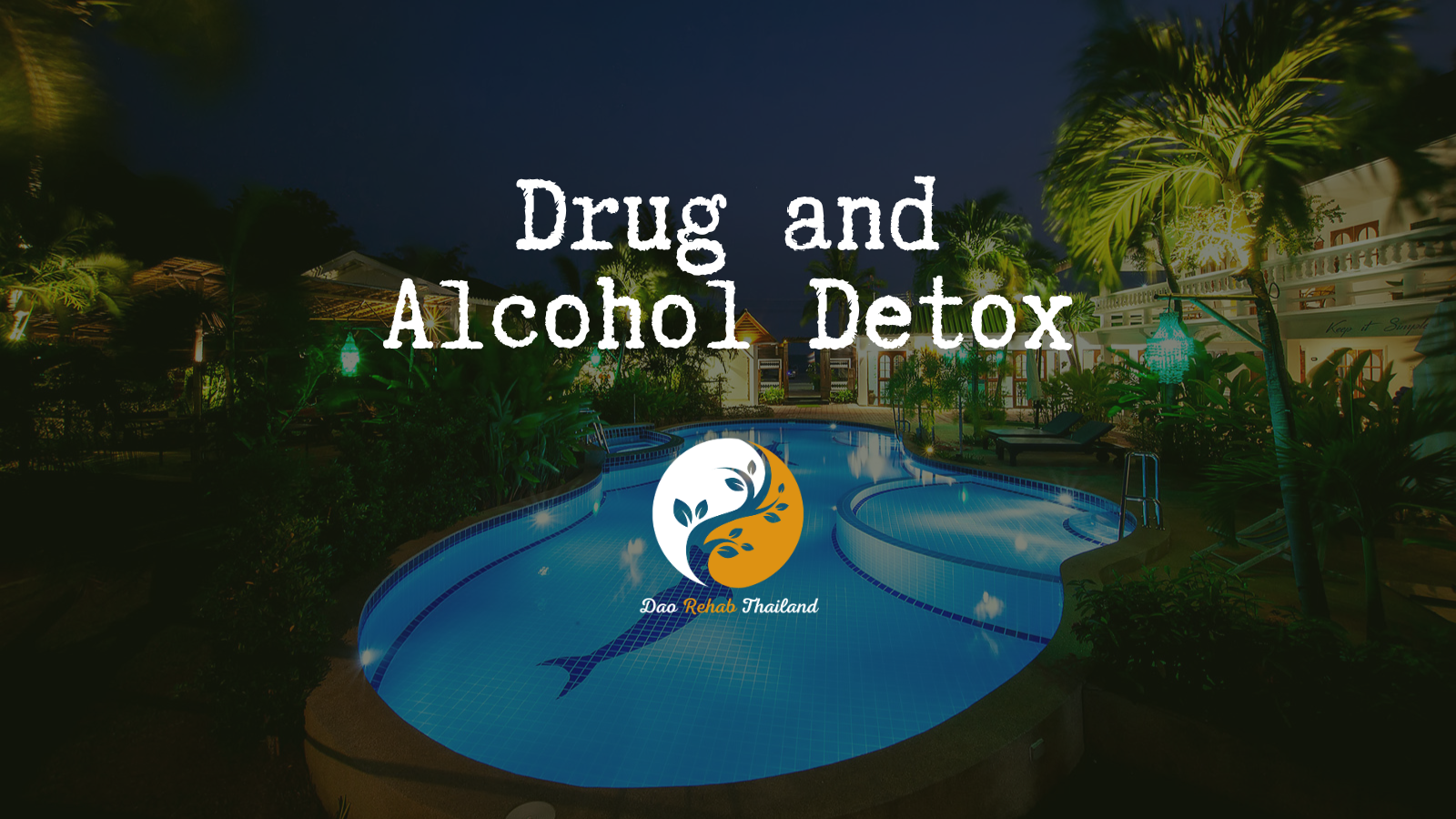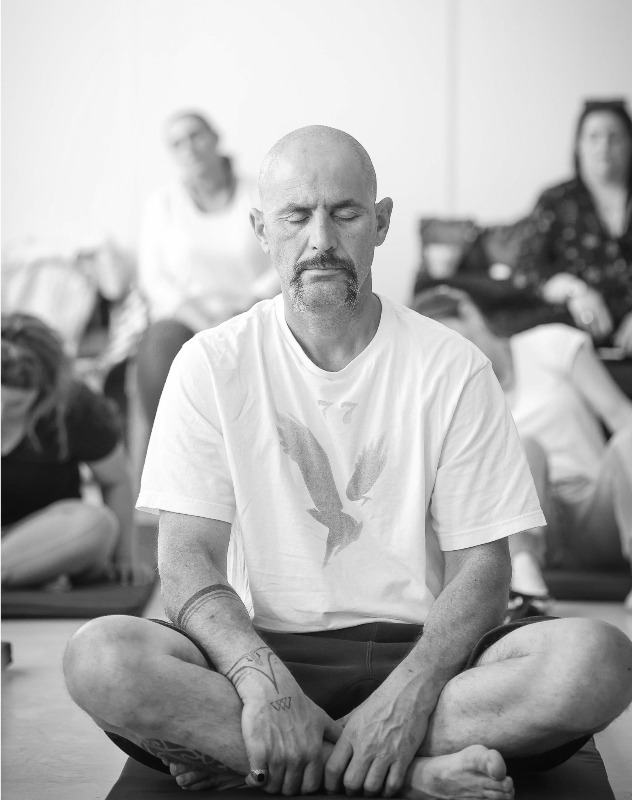
Addiction Withdrawal from Drugs and Alcohol
Addiction Withdrawal from Drugs and Alcohol
“Turning the impossible into possible”

"Detox from Addiction to Drugs and Alcohol at a Luxury Holistic Center in Thailand and Israel"

Addiction Withdrawal from Drugs and Alcohol
Dao rehab in thailnd – “Drug use artificially creates chemical imbalances in the human brain. For example, alcohol (a depressant) holds down the transmitters in the brain that produce energy and focus. As dependence on alcohol increases, the body adjusts its tolerance level accordingly. This is why as people drink more, and drink more often, it will take much greater amounts for them to become drunk. When a person embarks on withdrawal from drugs, the body needs some time to compensate for the sudden loss of whatever the drug of choice was providing. Until it does, a person’s natural balance will be shaken, and they will experience symptoms of drug withdrawal”.
In general, a good rule of thumb to consider is that whatever the substance use is providing, withdrawal will create the opposite effects. Cessation of stimulant use will create lethargy and depression, and vice versa. This will affect a person both emotionally and physically as we will illustrate below.
"Holistic Center for Trauma, Addiction, and Mental Imbalance Treatment in Thailand"
“Come to the beginning of your journey to freedom from addiction to alcohol, drugs, and pills, and rediscover your life within the serene embrace of DaoTherapy Rehab in Thailand—where holistic healing meets empowering recovery.”
DaoTherapy Holistic Rehab
Key Elements of OxyContin Detox:
Medical Supervision: OxyContin detox must be conducted under medical supervision, as the body may experience withdrawal symptoms. These can include nausea, anxiety, muscle aches, and insomnia. A medical team will monitor and manage these symptoms to ensure the patient’s safety and comfort.
Holistic Therapies:
Holistic Therapies: Many detox programs incorporate holistic therapies such as mindfulness, yoga, and meditation to help individuals cope with stress and anxiety during the detox process. These therapies support the mind-body connection and contribute to overall recovery.
Tapering Process
Tapering Process: OxyContin detox often involves a gradual tapering of the drug to reduce withdrawal severity. Doctors will slowly decrease the dosage over time to allow the body to adjust to lower levels of the substance.
Psychological Support:
Psychological Support: Like any addiction recovery process, detox from OxyContin includes psychological support. This can involve counseling, therapy, or support groups to address the mental and emotional aspects of addiction.
Post-Detox Treatment:
Post-Detox Treatment: After completing detox, continuing treatment is crucial to prevent relapse. This often includes participation in ongoing therapy, group support, and the development of new coping strategies to maintain sobriety.
What Does Withdrawal from Drugs and Alcohol Feel Like?
Withdrawal from Drugs and Alcohol: What to Expect
Withdrawal from drugs and alcohol varies in intensity and type of symptoms based on the substance, duration of use, and individual health. However, common feelings and symptoms include:
1. Physical Symptoms
– Pain and Discomfort: Muscle aches, headaches, and body discomfort are frequent, especially in opioid withdrawal.
– Gastrointestinal Distress: Nausea, vomiting, diarrhea, and abdominal cramps, common in alcohol and opioid withdrawal.
– Fatigue and Sleep Issues: Insomnia, hypersomnia, and restless sleep can occur, leading to exhaustion.
– Sweating and Chills: Often described as “hot and cold flashes,” these are due to the body’s attempt to balance after dependency.
– Shaking or Tremors: Alcohol withdrawal often includes hand tremors, which can make even basic tasks challenging.
2. Psychological Symptoms
– Intense Cravings: A strong desire to use the substance can dominate, making it difficult to focus on other things.
– Anxiety and Restlessness: High levels of anxiety are common and may escalate into panic attacks.
– Depression and Mood Swings: A sense of sadness, irritability, and mood instability, often linked to dopamine imbalance.
– Confusion or Cognitive Impairment: Feeling “foggy” or having difficulty concentrating is common.
3. Severe Reactions
– Seizures and Delirium Tremens (DTs): In alcohol withdrawal, severe cases may lead to seizures or DTs, characterized by confusion, hallucinations, and tremors. This requires medical supervision.
– Hallucinations: Seeing, hearing, or feeling things that aren’t there can happen with alcohol, stimulant, and hallucinogen withdrawal.
4. Emotional Rollercoaster
– Shame and Guilt: Many people feel shame or guilt about their dependency, which can surface acutely during withdrawal.
– Fear and Hopelessness: There’s often a sense of dread or hopelessness about life without the substance.
Withdrawal, although challenging, is the start of the healing process. In medically supervised detox, the discomfort is managed with medications, hydration, and support, making it safer and more bearable.

contact us
Contact us with your questions
We would love to speak with you! Feel free to reach out with any questions.

get in touch
Schedule a free consultation
Schedule a free consultation with our team and let’s make things happen!
What You Need to Know About OxyContin Withdrawal:
The duration of withdrawal depends on the substance, the individual’s health, the length of substance use, and frequency of use. Below is a general guide for withdrawal timelines for common substances:
1. Alcohol
– Duration: 5-7 days, with some symptoms lasting up to several weeks.
– Peak Symptoms: 24-72 hours after the last drink.
– Symptoms: Shaking, sweating, nausea, and in severe cases, seizures or delirium tremens (DTs), which require medical supervision.
2. Opioids (e.g., heroin, prescription painkillers)
– Duration: 4-10 days, with some psychological symptoms lasting weeks or months.
– Peak Symptoms: 48-72 hours after the last dose.
– Symptoms: Muscle pain, nausea, anxiety, and restlessness. The emotional symptoms like cravings and anxiety can linger.
3. Benzodiazepines (e.g., Xanax, Valium)
– Duration: Weeks to months, especially for long-term or high-dose users.
– Peak Symptoms: 1-2 weeks after stopping.
– Symptoms: Anxiety, insomnia, irritability, and in some cases, seizures. Tapering under medical guidance is crucial to reduce withdrawal risks.
4. Stimulants (e.g., cocaine, methamphetamine)
– Duration: 5-7 days, but cravings and psychological symptoms can persist for weeks or months.
– Peak Symptoms: 24-72 hours after the last use.
– Symptoms: Fatigue, depression, sleep disturbances, and cravings. Symptoms are primarily psychological.
5. Cannabis
– Duration: 1-2 weeks, with some mild symptoms lasting longer.
– Peak Symptoms: 2-3 days after stopping.
– **Symptoms: Irritability, anxiety, insomnia, and reduced appetite. Symptoms are generally milder than other substances but can be challenging for some.
6. Nicotine**
– Duration: A few days to several weeks, with cravings persisting longer.
– Peak Symptoms: 1-3 days after quitting.
– Symptoms: Irritability, cravings, and sleep disturbances.
Withdrawal typically peaks early and then gradually lessens, but some people experience **Post-Acute Withdrawal Syndrome (PAWS)**—lingering symptoms like mood swings, fatigue, and cravings—that can persist for weeks to months, especially after prolonged use.
What are Drug Detox Symptoms?
Drug detox symptoms are the physical and psychological effects that occur when the body begins to adjust to the absence of a substance it has become dependent on. The severity and type of symptoms vary depending on the drug, duration of use, and individual factors, but common symptoms include:
1. Physical Symptoms
– Nausea and Vomiting: Common across many substances, especially opioids and alcohol.
– Sweating and Chills: The body often goes through periods of extreme temperature changes, leading to sweating and chills.
– Headaches and Muscle Aches: Detox often brings physical discomfort, including body aches and migraines.
– Shaking or Tremors: Especially common in alcohol and benzodiazepine detox.
– Fatigue and Weakness: Feeling exhausted is a frequent symptom, as the body works hard to eliminate toxins.
– Insomnia or Sleep Disturbances: Difficulty falling or staying asleep is common, contributing to fatigue.
– Appetite Changes: Some experience a decrease in appetite, while others may have intense cravings for food.
– Seizures: A risk during alcohol and benzodiazepine detox, requiring medical supervision.
2. Psychological Symptoms
– Anxiety and Restlessness: Anxiety can become intense, often accompanied by feelings of dread or panic.
– Depression and Mood Swings: Detox can lead to low mood, irritability, and emotional instability.
– Intense Cravings: Strong urges to use the substance again can be overwhelming and persistent.
– Confusion and Brain Fog: Detox can cause difficulty thinking clearly, leading to memory lapses and reduced concentration.
3. Severe Reactions (Medical Emergencies)
– Delirium Tremens (DTs): Severe alcohol detox can lead to DTs, which are characterized by confusion, hallucinations, and agitation. This is a medical emergency.
– Hallucinations: In some cases, especially with alcohol and stimulant detox, visual or auditory hallucinations can occur.
– Heart Palpitations and Elevated Blood Pressure: Some drugs, particularly stimulants, can cause elevated heart rate and blood pressure, increasing cardiovascular risks.
4. Emotional and Behavioral Symptoms
– Irritability and Aggression: Many people feel easily agitated or become aggressive during detox.
– Feelings of Hopelessness: Negative thoughts and emotional lows can be hard to manage without professional support.
– Paranoia and Delusional Thinking: More common in stimulant detox, some individuals may feel suspicious or paranoid.
Since detox can involve serious health risks, especially for alcohol and benzodiazepines, medical supervision is strongly recommended. In a medically supervised detox, symptoms are managed with medications and therapies that make the process safer and more tolerable.
The following list shows common signs of drug withdrawal.
OPIOIDS
- Nausea
- Vomiting
- Diarrhea
- Loss of Appetite
- Abdominal Aches
- Muscle Aches
- Sweats
- Hot/Cold flashes
- Chills
- Piloerection
- Rhinorrhea
- Lacrimation
- Tremors
- Elevated Pulse
- Agitation/Irritability
- Pupil Dilation
- Yawning
- Sneezing
- Depression
- Anxiety
- Mood Swings
- Low Stress Tolerance
- Impaired Concentration
- Impaired Memory
ALCOHOL
- Headache
- Paroxysmal Sweats
- Night Sweats
- Loss of Appetite
- Unsteady Gait
- Tremors
- Nausea
- Vomiting
- Elevated Pulse
- Elevated Blood Pressure
- Elevated Temperature
- Muscle Twitching
- Anxiety
- Insomnia
- Agitation/Irritability
- Hallucinations (Auditory, Visual, and Tactile)
- Seizures
- Depression
- Impaired Concentration
- Impaired Memory
- Disoriented/Confusion
- Delirium Tremens
- Mood Swings
- Low Stress Tolerance
Psychological Support:
Psychological Support: Like any addiction recovery process, detox from Subutex includes psychological support. This can involve counseling, therapy, or support groups to address the mental and emotional aspects of addiction.
How to Deal With Withdrawal Symptoms
Dealing with withdrawal symptoms can be challenging, but there are several effective strategies and supports that can make the process safer and more manageable. Here are steps and techniques to help:
1. Seek Medical Supervision
– For certain substances, like alcohol and benzodiazepines, withdrawal can be life-threatening. A medically supervised detox is essential to monitor vital signs, provide medications, and address severe symptoms such as seizures or delirium tremens (DTs).
– Medications like methadone or buprenorphine for opioids, and benzodiazepines for alcohol withdrawal (under supervision), can ease symptoms safely.
2. Use Medications for Symptom Relief
– Over-the-counter (OTC) Medications: Pain relievers, antidiarrheals, and antacids can help with common withdrawal symptoms like aches, gastrointestinal upset, and headaches.
– Prescription Medications: Doctors may prescribe medications for anxiety, sleep issues, and cravings. For example, clonidine can reduce symptoms related to opioid withdrawal, while naltrexone helps manage cravings.
3. Stay Hydrated and Nourished
– Drink Plenty of Water: Withdrawal can dehydrate the body, especially when symptoms include sweating, vomiting, or diarrhea.
– Eat Nutritious Meals: Simple, balanced meals support recovery. Eating can be difficult during withdrawal, so small, frequent meals with whole grains, lean proteins, and vegetables are beneficial.
4. Practice Relaxation Techniques
– Deep Breathing and Meditation: These techniques can help manage anxiety and irritability. Practicing mindfulness or deep breathing can calm the nervous system.
– Progressive Muscle Relaxation: This helps relieve physical tension and can make sleep easier.
– Journaling or Talking: Writing down thoughts or talking to someone can help process feelings, manage cravings, and reduce stress.
5. Get Physical Activity
– Light Exercise: Even a short walk or gentle stretching can boost mood and reduce restlessness.
– Yoga and Tai Chi: These exercises help balance the body and mind, improve mood, and reduce anxiety.
6. Join Support Groups
– 12-Step Programs (e.g., AA, NA): These groups provide support and fellowship with others in recovery, helping manage cravings and offering encouragement.
– Counseling or Therapy: Individual therapy with a trained counselor, especially someone experienced in addiction recovery, can help address emotional symptoms and provide coping strategies.
7. Take Care of Sleep Hygiene
– Establish a Routine: Going to bed and waking up at the same time each day can support sleep quality.
– Limit Stimulants: Avoid caffeine, nicotine, and other stimulants close to bedtime.
– Create a Calm Environment: Keep the bedroom cool, dark, and quiet. Avoid screens and bright lights before bed.
8. Prepare for Cravings
– Distract Yourself: Engaging in hobbies, reading, or even watching a show can help shift focus when cravings strike.
– Use Coping Statements: Remind yourself why you’re quitting and that cravings are temporary.
– Reach Out to a Supportive Person: Speaking with a friend, family member, or sponsor can be a powerful way to get through cravings.
9. Celebrate Small Victories
– Track Progress: Keeping a journal of your progress can help you stay motivated and recognize achievements.
– Reward Yourself: Treat yourself with small, healthy rewards when you reach milestones in your recovery.
10. Consider Long-Term Support
– Ongoing Therapy: Continued counseling can help address the root causes of addiction and prevent relapse.
– Holistic Approaches: Meditation, mindfulness, and body-based therapies like acupuncture or massage can be effective in managing post-acute withdrawal symptoms and supporting long-term recovery.
Withdrawal can be overwhelming, but with these strategies and support systems, it becomes manageable.
What Medications are Commonly Used During Detox?
ALCOHOL
- Ativan
- Librium
- Magnesium
- Thiamine
- Phenobarbital
- Zofran
- Phenergan
- Vistaril
- Imodium
- Gabapentin
OPIOIDS
- Lucemyra
- Clonidine
- Robaxin
- Vistaril
- Bentyl
- Zofran
- Phenergan
Psychological Support:
Psychological Support: Like any addiction recovery process, detox from Subutex includes psychological support. This can involve counseling, therapy, or support groups to address the mental and emotional aspects of addiction.








